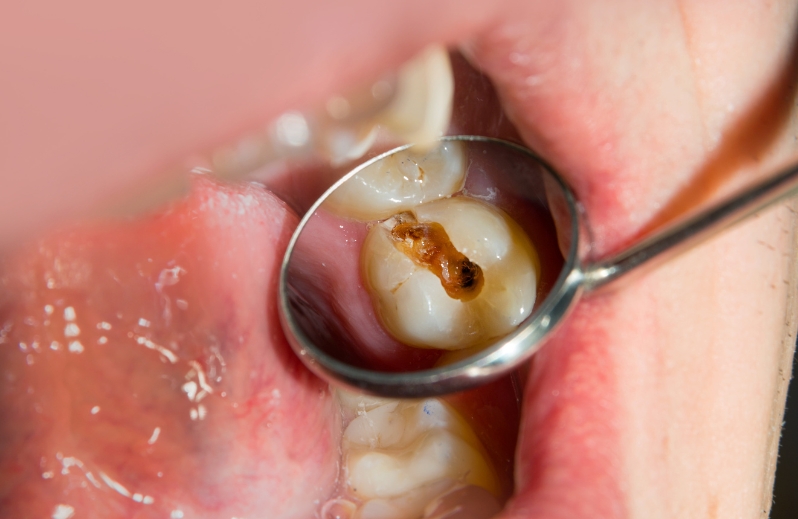1101-116 Grande Blvd, Cochrane, Alberta, T4C 2G4
Quick Guide to Handling Dental Emergencies

Dealing with dental emergencies can be stressful and painful. Knowing how to manage them effectively can significantly affect the outcome. This guide will walk you through common scenarios and provide clear steps to handle them, ensuring you can manage the situation until you reach a dentist.
Toothaches
Toothaches are one of the most common dental emergencies. They can range from mild discomfort to severe pain, often caused by cavities, infections, or gum disease.
Steps to Handle a Toothache:
- Rinse with Warm Salt Water: This can help reduce inflammation and cleanse the area.
- Use Over-the-Counter Pain Relief: Ibuprofen or acetaminophen can help manage the pain.
- Cold Compress: Apply a cold compress to the outside of your cheek to reduce swelling.
- Avoid Hard or Chewy Foods: Stick to soft foods and avoid chewing on the affected side.
Chipped or Broken Teeth
A chipped or broken tooth can occur due to trauma, biting on something hard, or decay.
Steps to Handle a Chipped or Broken Tooth:
- Save Any Pieces: If possible, collect any broken pieces of the tooth.
- Rinse Your Mouth: Use warm water to clean the area.
- Stop the Bleeding: If there’s bleeding, apply gauze to the area and apply gentle pressure.
- Cold Compress: Reduce swelling by applying a cold compress to the outside of your cheek.
Knocked-Out Tooth
A knocked-out tooth requires immediate attention to increase the chances of saving it.
Steps to Handle a Knocked-Out Tooth:
- Handle the Tooth Carefully: Avoid touching the root. Hold it by the crown.
- Rinse the Tooth: Use water to rinse off any dirt. Do not scrub or remove any attached tissue.
- Reinsert the Tooth: Gently place the tooth back into its socket if possible.
- Keep the Tooth Moist: If you can’t reinsert it, place the tooth in a milk or saline solution container.
Lost Filling or Crown
Losing a filling or crown can expose the tooth to damage and cause discomfort.
Steps to Handle a Lost Filling or Crown:
- Protect the Tooth: Use dental cement, available at most pharmacies, to cover the exposed tooth.
- Avoid Chewing on the Affected Side: Avoid soft foods and chewing with the exposed tooth.
- Save the Crown: If the crown is intact, keep it and take it to your dentist.
Abscesses
An abscess is a severe infection that can form at the root of a tooth or in the spaces between teeth and gums.
Steps to Handle an Abscess:
- Rinse with Salt Water: Rinse your mouth with a mild salt water solution several times a day.
- Pain Relief: Use over-the-counter pain relievers to manage discomfort.
- Apply Cold Compress: Reduce swelling by applying a cold compress to the affected area.
Soft Tissue Injuries
Injuries to the tongue, cheeks, gums, and lips can cause significant bleeding and discomfort.
Steps to Handle Soft Tissue Injuries:
- Rinse with Salt Water: Clean the area with warm salt water.
- Stop the Bleeding: Apply gentle pressure using gauze or a clean cloth.
- Cold Compress: Reduce swelling by applying a cold compress to the outside of the mouth or cheek.
Preventing Dental Emergencies
While some dental emergencies are unavoidable, taking steps to prevent them can reduce your risk significantly.
Tips to Prevent Dental Emergencies:
- Maintain Good Oral Hygiene: Brush and floss regularly to keep your teeth and gums healthy.
- Wear Protective Gear: Use mouthguards during sports and nightguards if you grind your teeth.
- Avoid Hard Foods: Be cautious with foods that crack or chip your teeth, such as ice, hard candies, and popcorn kernels.
- Regular Dental Check-Ups: Visit your dentist regularly for check-ups and cleanings to catch potential issues early.
Handling dental emergencies effectively can prevent further damage and ensure better outcomes. Keep this guide handy, and remember that timely intervention is crucial. Feel free to seek professional help if you’re ever in doubt. For dental emergencies, visit an emergency dentist in Cochrane for immediate assistance.



